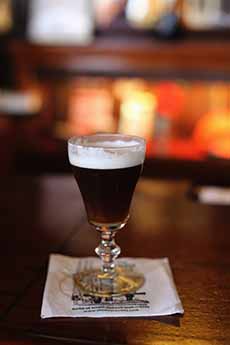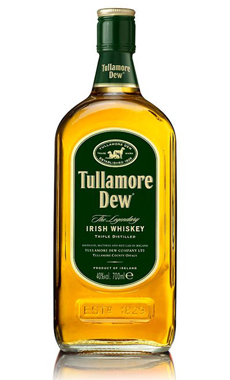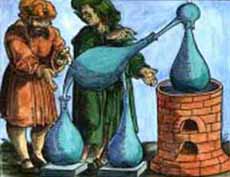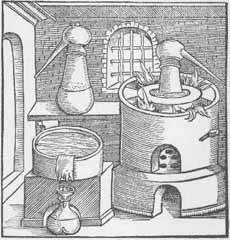TIP OF THE DAY: The Best Irish Coffee Recipe?
|
|
January 25th is National Irish Coffee Day, and for that occasion, we received an Irish Coffee recipe created by Tullamore D.E.W. Brand Ambassador Tim Herlihy. Tullamore claims its the best Irish Coffee recipe. Is it time to compare different recipes in a taste test? Tim may have consumed more, different Irish Coffee recipes than anyone else. So when he created his own recipe, we paid attention. It’s now the off dial Irish Coffee recipe of Tullamore D.E.W., our favorite Irish whiskey, a version of the original The first appeared in the U.S. in 1952 when journalist Stan Delaplane tasted it in Ireland and convinced his friend, the owner of the Buena Vista Café in San Francisco, to put Irish Coffee on his menu (it was made with Tullamore D.E.W.). Tim crafted his version after the Irish Coffee first made in 1943 thrown together in 1943 for cold travelers in a chilly seaplane terminal in Ireland (the scoop). Tim likes it as an after-dinner drink, but it can warm you up anytime. Bartender’s Tip: With all hot drink recipes, preheat the goblet or mug by first rinsing it with hot water (we use the microwave). There’s also a recipe for Irish Espresso below (recipe #2). If you don’t like coffee, a recipe for Irish Hot Chocolate follows it (recipe #3). Ingredients Per Drink 1. PREHEAT a clear-stemmed glass with very hot water. Add the sugar and brewed coffee and stir well until the sugar has melted. Then stir in the Tullamore D.E.W. 2. GENTLY WHIP the heavy cream by shaking it in a blender bottle, a.k.a. with a protein shaker with blender ball. We love this shaker, for scrambled eggs, instant soups and drinks, etc. and mixes (Here’s our review). You want a still somewhat loose, not stiff consistency. (You can also achieve this with a hand mixer.) 3. POUR the cream over the back of a hot teaspoon to create the top layer of the drink, and prevent the cream from penetrating the coffee layer. 4. GARNISH with grated nutmeg or cinnamon. Variations From THE NIBBLE Traditional Irish coffee combines whiskey, brown sugar, black coffee, and heavy cream. In these shots, coffee liqueur substitutes for the coffee and sugar, and Irish cream liqueur takes the place of the whiskey and cream. Ingredients Per Drink 1. ADD the Tullamore D.E.W. and coffee liqueur to a mixing glass. Stir and pour into shot glasses. 2. THICKEN the heavy cream slightly with a hand-held mixer or blender bottle. Top each shot with fresh cream and garnish with coffee beans. |
|
|
RECIPE #3: IRISH HOT CHOCOLATE Ingredients Per Drink 1. COMBINE the ingredients in a goblet or mug. Add the whipped cream. Sprinkle with chocolate flakes. |
||
|
WHAT MAKES IRISH WHISKEY DIFFERENT There are several distinct styles of whiskey in the world—American (rye and bourbon), Irish, Canadian and Scotch. While all are produced in a broadly similar way, there are substantial differences in the final product that are based on the choice of grains, the type of still, the number of distillations, the maturation period and the type of oak barrels in which the whiskey is matured. The end result is that each country’s whiskey has its own distinctive characteristics. Irish whiskey is smooth and clean-tasting, a result of triple distillation. It’s the only triple-distilled whiskey in the world. Here’s the scoop. Canadians spell “whisky” without the “e,” as do the Scots and most other countries except Ireland and the U.S. Scholars can’t determine why the “e” was dropped by the Scots many centuries ago. One theory is that the Irish made whiskey first and pronounced it with a broad “e.” When the Scots began to make it, they dropped the “e” to differentiate their product. A 1968 directive of the Bureau of Alcohol, Tobacco, and Firearms specifies “whisky” as the official U.S. spelling, but allows the alternative spelling, “whiskey,” which most U.S. producers prefer. Check out the language of whiskey in our Whiskey Glossary. Alcohol distillation was discovered in the late eighth century by an Arab scholar, Abu Masa Jabir ibn Hayyam, “the father of modern chemistry.” Among other discoveries were acetic acid, citric acid, tartaric acid, hydrochloric acid, nitric acid and aqua regia, one of the few substances that can dissolve gold, and crystalization. Jabir invented many types of now-basic chemical laboratory equipment. One was the alembic still, the al-ambiq. When Jabir distilled wine, he created the world’s first distilled alcohol, and discovered a liquid that had benefits as medicine. Since this equipment was often used to boil powdered antimony into a liquid called al-kohl (used to make the cosmetic kohl), the liquid became known as alcohol and the al-ambiq became the modern alembic still. |
|
Distillation remained a secret process, handed down orally. It was ultimately shared with monks in Spain, who also used it for medicinal purposes, adding herbs and other botanicals to create distillations such as Benedictine and Chartreuse. Missionary monks brought the recipe to Ireland. The secret process for distilling alcohol from wine was written down for the first time in a European language around 1300. It was accomplished by Arnaldus de Villanova (Arnald of Villanova), a Spanish physician, scholar, and professor of medicine in Montpellier, France, who was fluent in several languages including Arabic. (He also discovered carbon dioxide and developed pure alcohol). He called the distilled alcohol aqua vitae, water of life. It translated to aquavit (Scandinavia), eau de vie (France) and vodka (Poland and Russia). Villanova believed it would “prolong life, clear away ill humors, revive the heart and maintain youth.” Others claimed it also alleviated diseases of the brain, nerves, and joints; calmed toothaches; cured blindness, speech defects and paralysis; and warded off the Black Death. (Needless to say, it does none of these things, except perhaps putting one to sleep so as not to feel the toothache.) In 1478, 48 years after the invention of the printing press, the first book on distillation was published. It became a best-seller, with 14 printings in 20 years. [source] |






